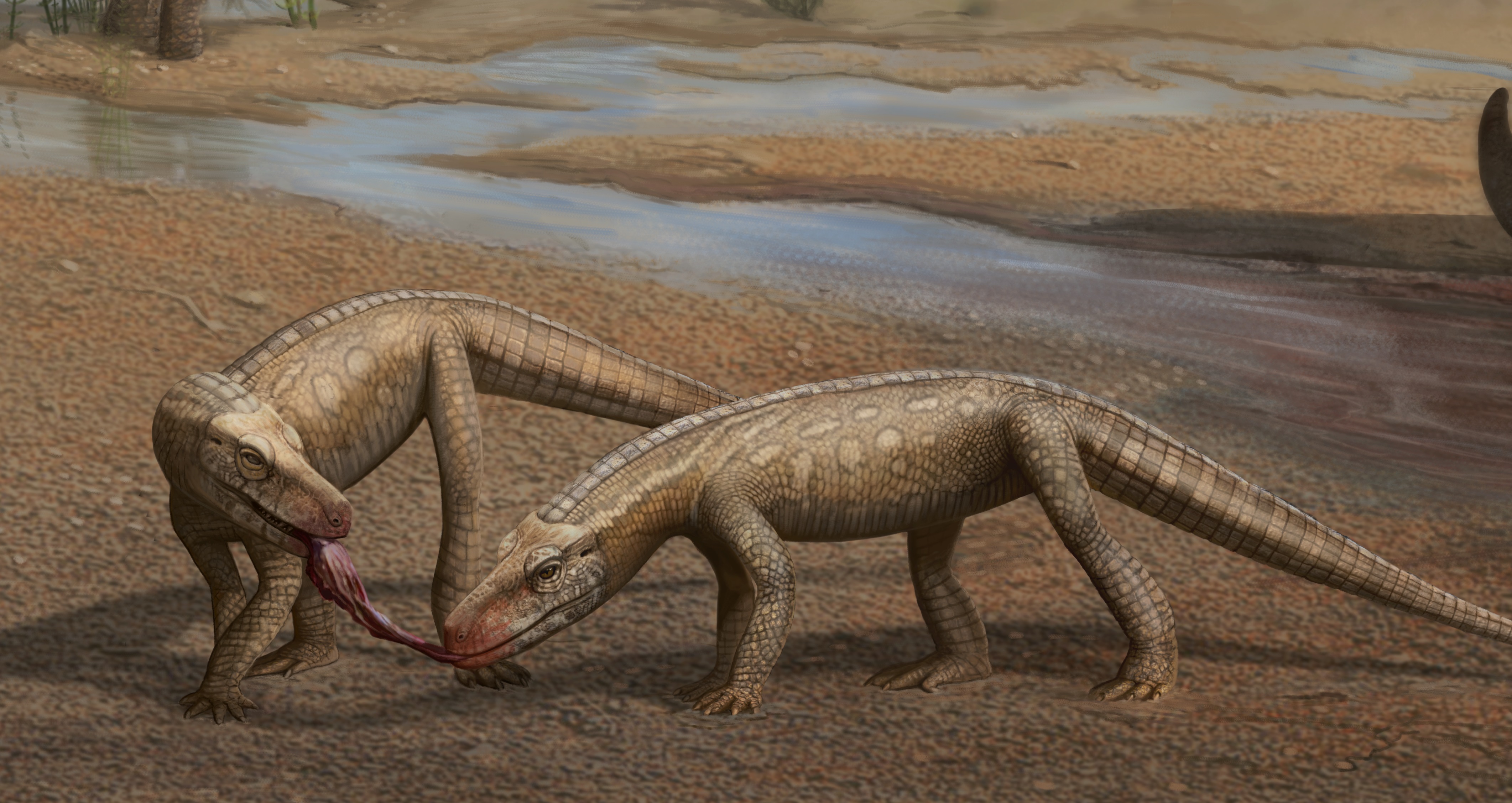First Ancient Crocodile Relative from 237 Million Years Ago Was Unearthed in Brazil
Posted on Categories Discover Magazine

Crocodiles have been around for a long time and lived all over the world. A fossil representing a new species of crocodile-like ancestor is the first small predatory reptile of its kind to be found in Brazil and is described in a Scientific Reports paper.
The fossil, which dates back about 237 million years, predates the rise of the dinosaurs, reinforces the wide geographical distribution of crocodile-like reptiles called pseudosuchians, and represents an evolutionary link to the modern crocodile. The new species has been named Parvosuchus aurelioi.
Crocodiles Before Dinosaurs
Pseudosuchians were common four-legged reptiles that lived during the Triassic Period (252 million years to 201 million years ago). Although some were among the largest carnivores, smaller pseudosuchians known as gracilisuchids lived alongside them.
The fossil size indicates P. aurelioi was not an apex predator. Its skull measures under 6 inches long, with the entire skeleton measuring about 3 feet long. The skull features long slender jaws with pointed teeth that curved backwards.
(Credit: Janaína Brand Dillmann)
Prestosuchus chiniquensis, a much larger pseudosuchian predator, lived alongside P. aurelioi. The fact that the two “proto-crocs” coexisted gives researchers clues about what the world was like before the Age of Dinosaurs.
“The discovery of a small predator in fossiliferous beds that precede the ones housing the oldest dinosaurs gives us clues about the ecosystems that existed before the dawn of the dinosaur era,” says Rodrigo Müller, a paleontologist from the Federal University of Santa Maria in Brazil and an author of the paper.
“In this case, the presence of this small predator among fossils of much larger predators suggests that these ecosystems, where Brazil is located today, were very complex,” he says.
Read More: A Complete Dinosaur Timeline to Extinction: How Long Did They Roam Earth?
Distribution and Diversity
The discovery of a gracilisuchid in Brazil reinforces the wide geographical distribution of Gracilisuchidae. Moreover, P. aurelioi represents another piece in the evolutionary puzzle of the lineage that later gave rise to crocodiles. Several pseudosuchians lineages spread across Pangea, occupying different niches.
“There were giant forms, small forms, quadrupeds, bipeds, some with armor, some specialized in eating meat, and others that fed on plants,” says Müller. “Additionally, some developed beaks and bizarre features. There were also agile pseudosuchians that ran on land and others that adapted to living in water.”
That diversity diminished as dinosaurs began to dominate. But the evolutionary line never completely died out says Müller.
“The lineage that led to crocodiles was not vanished during the Mesozoic Era, coexisting with different types of dinosaurs and persisting today through alligators, crocodiles, and gharials,” Müller says.
Read More: Do We Still Have Any Species Today That Are Descendants of Dinosaurs?
Article Sources
Our writers at Discovermagazine.com use peer-reviewed studies and high-quality sources for our articles, and our editors review for scientific accuracy and editorial standards. Review the sources used below for this article:
Before joining Discover Magazine, Paul Smaglik spent over 20 years as a science journalist, specializing in U.S. life science policy and global scientific career issues. He began his career in newspapers, but switched to scientific magazines. His work has appeared in publications including Science News, Science, Nature, and Scientific American.